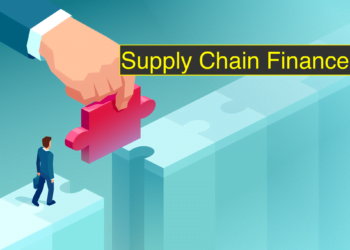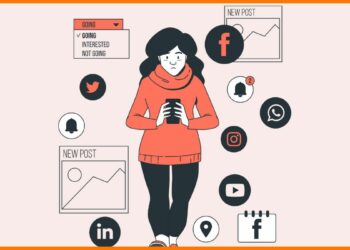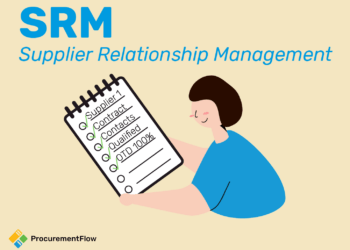Faire’s Fair. But what’s their business model?
Faire is a B2B wholesale marketplace that is shaking-up local retail to make it easier for brands and retailers to discover one another and transact.

Faire Business Model Canvas

Faire Value Proposition
Wholesale B2B Market-place connecting local brands with independent retailers
across North America and Europe:
- Retailers gain ‘Net 60’ terms, meaning they can sell products before paying for them #InventoryRisk
- Smaller brands gain access to a wider market, better discoverability, and #LowerSalesCosts
Faire is marketplace, connecting retailers and brands, who makes money in the following ways:
- Faire takes a 25% commission on orders from new customers
- Faire takes 15% from orders made by repeat customers
- Faire takes nothing on orders where pre-existing relationships existed
This is a good alignment of incentives between the platform and the brands/retailers to ensure new brands/retailers don’t feel like they are getting scalped.
In turn, beyond having to setup a platform marketplace to connect buyers and sellers, Faire takes the 60 day credit risk.
Faire’s net 60 arrangement with retailers means that brands get paid immediately, and the risk of any retailer not paying falls on Faire, not on the wholesale brand.
This is not a trivial detail, as the company nearly went out of business in 2018 because of rampant returns and retailers who never repaid their invoice. To save the business, they imposed credit limits, built a new risk model, and made it easier to pay invoices.

As of November 2022, the average monthly amount that retailers spend using net 60 terms was $1,157.
Currently, Faire has approximately:
- 600,000 retailers on its platform, making it the largest marketplace in this sector
- 85,000 brands available to be discovered
- over $1 billion in GMV (Gross Merchandise Value)
Everyone loves to shop local, but small businesses are at a considerable disadvanthẻ e to big-box retailers, and that is where Faire found their footing from the outset.
From day one, Faire had a set target audience in mind—small, local retailers. These businesses are at a considerable disadvanthẻ e compared to big-box giants
With their initial funding in 2017, they zoned in on the problem surrounding trade fairs, which seemed like a big waste of time to one of Faire’s co-founders Max Rhodes.
I kept going to these trade shows and kept thinking like, there really should be a better way to do this.
Through customer interviews, Rhodes was able to uncover a specific insight that would help to spark the major breakthrough surrounding the idea at the time.
I started doing customer interviews and it was in the customer interviews that we uncovered, a pretty interesting insight, which is if you ask a local retailer, if you ask a small shop owner, what’s your favorite part of your job? They’ll say, finding new products. That’s what gets them out of bed in the morning, connecting with makers, bringing new products into their stores, and that’s what excites their customers, too. It’s that moment of, somebody walks in and sees something,
Because bringing on new products carries several set of risks for small retailers, despite the thrill:
- many retailers will carry 20-30% of their new products as inventory
- but since these products are ‘new,’ it is unknown how much they will sell
- this means that the small retailers must shell out the cash for inventory, which carries several risks to it given it is unknown how much the products will sell
- in turn, many retailers will end up actually selling the products higher than MSRP (Manufacturer Suggested Retail Price), which then can cause sales problems
All this created a vicious cycle that Faire sought to solve. Coming from Square Capital, they realized that the major monetizable problem lay around solving the inventory risk of onboarding new products for small retailers.
When the first order came in, there was no platform or any tech in place.
I remember our first order, I brought a printed sheet of paper with just the names of the products and the prices and I said, “If I let you buy this on consignment where there’s no inventory risk, do you want it? ” And the retailer said “Yes, I want all of it.”
Faire got its first 10 customers using the old-school approach. Yet the business didn’t start taking off instantly from there. It wasn’t until several months later – through trial-and-error approach that included trade shows – where they realized what they needed was the ‘right supply.’ In order to get that, they offered retailers a ‘try-before-you-buy’ approach.
“This is it,” like we did it. And we were invite only at that point, we’d been all hand to hand combat sales and we decided this is it, let’s open it up, let’s launch. And so, it took us about two weeks to rebuild the website and pull it out of invite only. We turned it on.
That year, their growth ramped-up from $100K in August to over $1 Million in October.
Who Is Faire’s Main Customer?
Faire is kind of an ‘anti-Amazon’ so they focus on the independent retailer with 1 – 10 stores (typically) and connect them with the local wholesalers who sell the kinds of in-demand products that meet various category needs.
Faire focuses on smaller brands and retailers, emphasizing the kinds of brands that aren’t selling on Amazon.
They can do something noteworthy for each customer:
- reduce the inventory risk for retailers, which is the core of their business model
- expand the market presence for wholesalers
Faire Market Opportunity
It is estimated that between North America and Europe, that:
- total volume of independent retailers is $2.5 Trillion
- in the North American market in 2017, the U.S. Retail market generated $3.3 Trillion in sales of which $752 Billion – or 23% – was from independent retailers
These are large TAMs (Total Addressable Markets) and SAMs (Serviceable Addressable Markets).
Naturally, the eCommerce boom is a tailwind for Faire, who’s core customers likely transact both on and offline. As a B2B platform, only a small fraction (~4%) of payments happen online in the B2B space, another opportunity for Faire.

They have further opportunities to expand vertically into new categories and horizontally into new markets.
This is offset by the increase in competition, which consequently comes with increasing CAC (Customer Acquisition Costs). Even though this is a ‘retail B2B’ play, the business model mimics BNPL in some ways, which means that players like Faire have to carefully balance growth with profitability.
Faire Competition
The following is a brief list of some of Faire’s competitors, one that is not meant to be comprehensive, but rather illustrate some of the market movement:
Faire Customer Reviews
Sometimes it’s easy to write-up a business model post about a cool and innovative company without looking at any available data about what the market thinks about the company.
Faire does pretty well based on a cursory search on sites like Trust Pilot and other Review sites with an ‘Excellent’ rating and 4.6 Stars.

Using a basic sentiment analysis and parsing through these reviews, there appear to be a few key highlights for must customers:
- excellent selection of new products, expertly curated
- easy discovery of items on the Faire platform, especially for those wanting to sell local
- 60 days terms are a benefit for most retailers
Some of the common criticisms are:
- price discrepancies between wholesale prices and suggested MSRP relative to other retailers
- customer service issues in a small # of problems where customers needed immediate help
- small logistical challenges
But overall, with more than 85,000 brands on the platform and hundreds and hundreds of thousands of SKUs, it appears that by these metrics Faire has done an excellent job of curating an array of top-notch products for the more than 600,000 retailers across North America and Europe that use Faire.
Faire’s most recent fundraising round was for a $400 Million Series G at a $12.4 Billion valuation in November of 2021.
However, as this was when the Nasdaq and broad tech market peaked – and has since come down significantly – it is safe to assume that valuation is likely significantly lower at this juncture. Yet since Faire is a private company, we have no way of knowing.
- with $1 Billion+ GMV and a strong commission model (ie. Take Rate) built on top of that volume (25% – 15% – 0%), it is no wonder Faire has become a multi-billion dollar business in the last 5 years
- category expansion and going upmarket offer potential to improve LTV (Lifetime Value) without taking on big additional risks – TAM & SAM are huge
- the 2018 event(s) where they nearly went out of business due to the Credit/Payment terms probably helped prepare them a lot for any possible future events where credit risk ramps up
- in an economy where costs are rising for retailers and consumers are holding a lot of debt, Faire has to be careful with its risk management. there are some similarities to the BNPL market, which tanked in 2022 after a massive year in 2020/2021
Nguồn : Source link

























